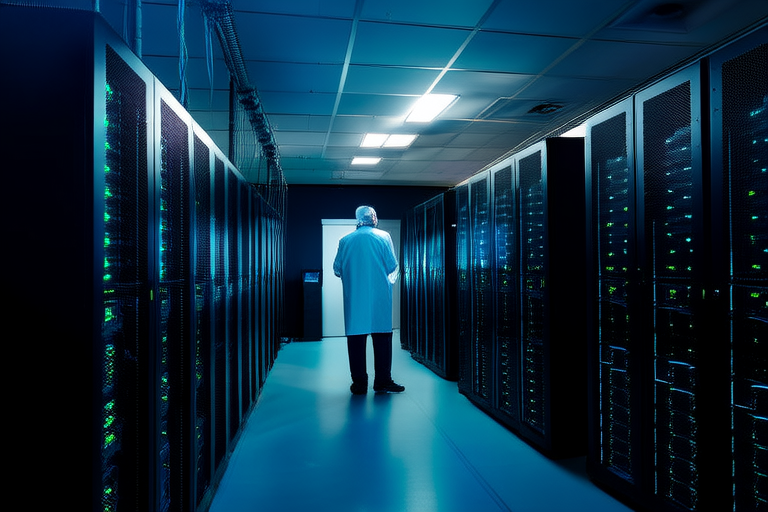“`html
Navigating the Future with Cloud Computing and Edge Computing Strategies
Introduction
Cloud computing and edge computing are two pivotal technologies shaping the future of digital transformation across various industries. As businesses seek to enhance operational efficiency, reduce costs, and improve service delivery, these technologies offer powerful solutions. Cloud computing provides scalable, cost-effective, and accessible IT resources, while edge computing ensures real-time data processing and reduced latency. The integration of both strategies is becoming increasingly important, enabling organizations to leverage the strengths of each technology for optimal performance.
Understanding Cloud Computing
Definition and Core Components
Cloud computing refers to the delivery of computing services—such as servers, storage, databases, networking, software, and intelligence—over the internet (“the cloud”). These services can be categorized into three main types:
- IaaS (Infrastructure as a Service): Provides virtualized computing resources over the internet. Users can rent servers, storage, and networking components.
- PaaS (Platform as a Service): Offers a platform allowing customers to develop, run, and manage applications without the complexity of building and maintaining the infrastructure typically associated with developing and launching an app.
- SaaS (Software as a Service): Delivers software applications over the internet, eliminating the need for users to install and run applications on their own computers.
Benefits of Cloud Computing
The primary benefits of cloud computing include:
- Scalability: Resources can be scaled up or down based on demand, ensuring efficient use of resources.
- Cost-Efficiency: Reduces the need for expensive hardware and maintenance.
- Accessibility: Allows users to access data and applications from anywhere with an internet connection.
Industry Examples
Industries such as finance, healthcare, and retail are leveraging cloud computing to innovate and enhance customer experiences. For example, financial institutions use cloud platforms to process large volumes of transactions efficiently, while healthcare providers utilize cloud solutions to store and share patient records securely.
Understanding Edge Computing
Definition and Role
Edge computing involves processing data at the edge of the network, closer to where it is generated. This approach reduces latency and improves data processing efficiency, making it ideal for applications requiring real-time decision-making. By handling data locally, edge computing minimizes the amount of data that needs to be sent to central cloud servers, thereby reducing bandwidth usage and improving response times.
Complementing Cloud Computing
Edge computing complements cloud computing by providing the necessary infrastructure for real-time data processing. While cloud computing excels in storing and managing large datasets, edge computing ensures that critical data is processed quickly and efficiently at the point of generation. This combination enables businesses to achieve optimal performance and responsiveness.
Use Cases
Edge computing finds significant application in industries such as autonomous vehicles, IoT devices, and smart grids. For instance, autonomous vehicles rely on edge computing to process sensor data in real-time, enabling quick responses to changing road conditions. Similarly, IoT devices in smart cities use edge computing to analyze data locally, reducing the load on central servers and improving overall system reliability.
Integrating Cloud and Edge Computing Strategies
Synergies Between Cloud and Edge Computing
The integration of cloud and edge computing offers numerous synergies. By combining the scalability and storage capabilities of cloud computing with the real-time processing power of edge computing, organizations can achieve enhanced performance and reliability. Hybrid architectures that leverage both technologies effectively can provide a robust solution for complex applications.
Hybrid Architectures
Hybrid architectures involve deploying both cloud and edge computing resources to create a seamless ecosystem. These architectures allow data to be processed at the edge when immediate action is required, while non-urgent data can be sent to the cloud for long-term storage and analysis. This approach ensures optimal resource utilization and improved system performance.
Challenges and Solutions
Implementing integrated cloud and edge computing strategies presents several challenges, including:
- Data Management: Ensuring consistent data management across distributed systems.
- Security: Protecting sensitive data stored and processed at the edge.
- Interoperability: Ensuring compatibility between cloud and edge systems.
To address these challenges, organizations can adopt best practices such as implementing robust security protocols, using standardized APIs, and establishing clear data management policies.
Industry Applications and Case Studies
Healthcare
In healthcare, cloud and edge computing are being used to improve patient care and streamline administrative processes. For example, hospitals are deploying edge devices to monitor patients in real-time, enabling early detection of health issues. Meanwhile, cloud platforms are used to store and analyze medical records, facilitating better collaboration among healthcare professionals.
Automotive
The automotive industry is embracing cloud and edge computing to enhance vehicle safety and performance. Autonomous vehicles rely on edge computing to process sensor data in real-time, while cloud platforms are used to update vehicle software and analyze driving patterns. This integration ensures that vehicles remain safe and efficient, even in challenging environments.
Manufacturing
Manufacturers are leveraging cloud and edge computing to optimize production processes and improve quality control. Edge devices are used to monitor machinery and detect anomalies, while cloud platforms are employed to analyze production data and identify areas for improvement. This approach enables manufacturers to reduce downtime and increase productivity.
Smart Cities
Smart cities are using cloud and edge computing to enhance urban infrastructure and improve citizen services. Edge devices are deployed to monitor traffic, public transport, and environmental conditions, while cloud platforms are used to analyze data and make informed decisions. This integration helps cities become more efficient and sustainable, enhancing the quality of life for residents.
Future Trends and Predictions
Emerging Trends
The future of cloud and edge computing holds exciting possibilities. Emerging trends such as 5G integration, AI-driven optimizations, and increased security measures will further enhance the capabilities of these technologies. 5G networks will enable faster data transfer rates, making edge computing even more effective. AI will play a crucial role in optimizing data processing and decision-making, while advanced security measures will ensure the protection of sensitive information.
Potential Disruptions and Opportunities
These advancements will bring both disruptions and opportunities. Organizations that fail to adapt to these changes risk falling behind competitors. However, those that embrace cloud and edge computing will benefit from enhanced performance, reduced costs, and improved service delivery. The potential for innovation is vast, offering endless opportunities for growth and development.
Conclusion
In conclusion, cloud and edge computing are transforming the way businesses operate and innovate. By integrating these technologies, organizations can achieve optimal performance, scalability, and efficiency. As we move towards a more connected and intelligent future, staying informed about ongoing advancements in cloud and edge computing will be crucial. Embracing these technologies will enable businesses to navigate the future with confidence and success.
“`


